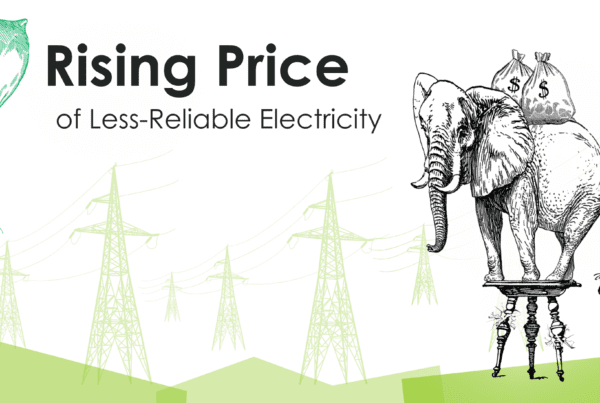Earlier this year I was partaking in an interview for a large project and we were asked a formal list of specific questions, the last of which was, why should we hire your team? While one possible response would be to ramble on for a few minutes about how great we were as demonstrated by this, that and the other, I thought of a different direction.
We are passionate about energy efficiency. We are passionate about getting it right. We are passionate about making a difference and improving things.
If you do not want these things, we are not your firm; and I’m serious because I do not believe some clients really want these things.
Passion to get it right simply means savings are going to be as accurate as we can reasonably get them as the budget and client allow – not only are the calculations sound, feasible and the answer relatively accurate, but is the project eligible per the rules of the program? Is the baseline, or less expensive, less efficient alternative reasonable? Is the less efficient alternative less expensive?
Making a difference and improving programs covers both the project level and the program level. We’re not here to beat people up and go home. If savings are fake or not eligible, we want to help clients identify and develop other substantial projects that are actually having an impact compared to the status quo.
As I am quoted on our website, I will tell people what they need to know, not necessarily what they want to hear, and this is consistent with the entire company. On rare occasion we stray off the ranch by trying to engineer a less expensive half-baked solution to a problem that needs a larger more comprehensive overhaul to fix correctly and sufficiently – such as trying to use too much of the currently-installed crap rather than ripping it out, spending 50% more and doing it right. But this isn’t really what I’m talking about in this post.
Good clients want their consultants, vendors, and contractors to report what is happening and offer solutions to improve their programs or systems. In a recent post, Don’t Ask, Don’t Look, Don’t Tell, I explain how some program folks by all indications aren’t so much interested in what the real impacts of their programs are. They filter information, they limit the scope in their requests for proposals to neuter impact evaluation, and/or they provide too little budget to do a decent impact (program-attributable savings) evaluation.
In another recent post, Rogue Choir Boy, I explain that many people in our industry, for pretty much other bizarre reasoning, agree that impact evaluation is a waste of time because it can’t be accurately assessed anyway. If we as industry are skimming 1-2% off all energy bills that customers are paying and not using it cost effectively, as indicated by a number of cost effectiveness tests, especially ratepayer impact measure (RIM), where benefits should be greater than cost, I’m out of here. Is the program a parasite on society like a tapeworm, or is it a benefit to society like a honeybee, pollinating foodstuffs and making honey on the side – i.e., everyone wins. Without rigorous impact evaluation, prepare for the march of the tapeworm.
The American Council for an Energy Efficient Economy says energy efficiency is by far the least cost resource – i.e., doing things to not use energy and capacity (demand) is cheaper than building more capacity and producing more energy. In fact, ACEEE has an entire conference devoted to this later this month. Portfolio managers should have to prove programs are cost effective with third party evaluation. While not all programs may be cost effective, the portfolio has to be. Some non-cost-effective programs are needed for equity purposes. For example, small business pays a large percentage of EE funds but “giving it back” by boosting cost effective measures is very difficult to do because there is no economy of scale with small business projects – impacts for the needed marketing/promotion required to get these customers to act.
Portfolios should provide wins for all stakeholders – utilities, consultants, vendors, contractors, customer participants and non-participants. I get the strong sense that for some portfolios the utility/implementers and the participants get wins but the non-participants get the shaft because the participants may be getting too much incentive for the impacts they are accomplishing. Actually, the participants may be getting the shaft too because they may not be getting the savings they should be getting. If utility/implementers can “fake” their way through with no one looking under the hood, they likely aren’t saving what they should be, the regulators don’t know it, and the customers don’t know it.
I go back to my conversation with the guy at the ACEEE summer study for industry a couple years ago. He said all evaluations should be on behalf of the regulators. I agree and not because working for the utility would bias outcomes, but utilities don’t think they have problems with impacts in some programs and some of these programs are very large. We know from experience time and again that program verification and in some cases measurement and verification helps, but in many cases does not come close to ensuring reasonably accurate results. Regulators I would hope would want more than a wink and a nod for impact evaluation
There are consultants all too happy to tell clients what they want to hear. How smooth can that be? There are consultants on the implementation side who will challenge and defend indefensible evaluation findings – projects that are not eligible, bad applications of engineering principles in determining impacts, or facts like large volumes of logged data showing assumptions / stipulated values are clearly wrong. Then it’s a sampling problem, the time of year, the economy or the dog ate the hard drive.
On the flip side to all this of course are clients, utilities, program implementers that strive for accuracy and reality, and continual improvement. They want to learn how to do things better and avoid problems and improve poor realization rates (“actual” savings divided by initial estimated savings).
As consultants we also greatly appreciate partnerships with our clients, whether they are other consultants, utilities, or prime contractors. Partnerships include shared sacrifice and shared benefit. Shared sacrifice includes project or program development time and expense in return for substantial work, revenue, and profit. Tip offs include not wanting to pay for program development but asking, what would that look like? Good grief. For great long-term clients we do many things for free, including “what it would look like”, preliminary analysis and development, spending time and attending functions with their customers and not charging for it, rounding up some data. Bargaining tooth and nail for a blanket in Juarez may be novel, but it isn’t how we like to do business for real.
Finally, it’s always nice to get paid. The worst clients not only recoil when told replacing their early 20th-century HVAC system won’t save more energy than they currently use, and then they refuse to pay because they should have been told the answer ahead of time.
Tidbits
Imagine this, Johnson Controls Inc. wants congress to pass the President’s jobs bill, whatever it’s called this time. I’m sure they have a billion or two (billion) with their name on it in the bill.
Outrage of the Week
Meanwhile, a bunch of other companies are pressing for another energy bill that would “help companies make their supply chains more efficient; as provisions to update national model building codes to increase energy efficiency of new buildings”. Good grief! This better go down in flames. If anyone thinks the role of government is to fix company supply chains, their name would be Vladimir, Hugo, Raul, or Kim.




